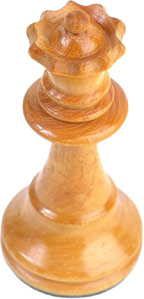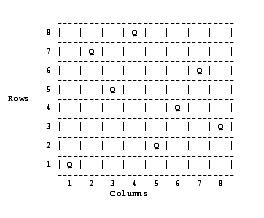In each issue of the Automation Notebook we feature a section of brainteasers. These are the brainteaser answers from Issue 4, 2005 of the Automation Notebook. The brainteaser questions are repeated in black. The answers to the brainteaser questions are highlighted in red with explanations. You can view the brainteasers from Issue 4, 2005 without the answers here: http://library.automationdirect.com/brainteasers-issue-4-2005/
1. “Rebates on PLCs”
A company that sells overpriced PLCs and needlessly expensive AC Drives decides to offer their customers a rebate. They offer $250 to each PLC customer, and $400 to each customer who bought an AC Drive. Unfortunately, the company has lost track of the number of customers who have purchased each product, but they do know that a total of 5,392 customers are eligible for one rebate or the other (no customers qualify for both rebates). After the rebate period ends the company realizes that only 1/5 of their PLC customers and only 1/8 of the AC Drive customers have applied for the rebates. Can you determine the total amount of all the rebates to be paid by the company?
Answer: If 1/5 of the PLC customers applied for a $250 rebate, this is equivalent to $50 per PLC customer. Likewise, if 1/8 of the AC Drive customers applied for a $400 rebate, that’s also equal to $50 per AC Drive customer. So the total pay-out is equivalent to $50 for every one of the 5,392 customers, or $269,600.
A more mathematical approach: Use X to represent the total PLC customers, and 5392-X for the AC Drives customers. So the pay-out for PLC customers would be:
$250(X)
———-
5
And the payout for AC Drive customers would be:
$400 (5392 – X)
——————-
8
Add these values and the X’s cancel out.
$50X + ($400 × 5392 ÷ 8) – $50X = $50(5392) = $269,600
2. “Husband and Wife”
A husband and wife have a combined age of 91. The husband is now twice as old as his wife was when he was as old as she is now. What are their ages?
Answer: If the husband is H years old today, then the wife must be 91-H years old (today).
The puzzle mentions their ages at an earlier point in time, let’s say “T” years ago. So the husband (H) is twice as old as the wife was T years ago. Written mathematically:
H= 2 (91-H-T).
His age at this previous point in time is equal to her age now, or: H-T=91-H. Solve for T: T=2H-91. Substitute this value for T into the first equation:
H=2(91-H-(2H-91))
H=2(182-3H)
H=364 – 6H
7H=364
H=52
So the husband is 52 and his wife is 91-52 = 39 years old.
3. “The Queen Attacks”
Place eight queens on a chessboard in such a way that none of the queens is attacking another queen. (Schuh)
Answer: There are 92 unique solutions to the eight-queen problem. Within these 92, there are 12 basic patterns. All of the other 80 solutions can be obtained from these 12 unique patterns by using rotations and reflections.
The 12 basic solutions are shown in the following table.
Since no queen can share the same row, the table simply shows the column position for each row. For example, if you are constructing solution number 1, then the Queen for chessboard row 1 should be placed in column 1, the Queen for row 2 should be placed in column 5, etc. A diagram showing solution number 1 appears below the table.
Numbers indicate which column to use per chessboard row
The eight-queen puzzle originally appeared in the following book:
Schuh, F., (1943), Wonderlijke Problemen; Leerzam Tijdverdrijf Door Puzzle en Speel, W.J. Thieme & Cie, Zutphen.




